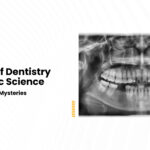Sinus Lift Surgery: Everything You Need to Know
In the world of modern dentistry, dental implants have become the gold standard for replacing missing teeth. However, not everyone has the ideal bone structure to support an implant, especially in the upper jaw. This is where sinus lift surgery comes into play. If you’ve been told you need a sinus lift before getting dental implants, don’t worry! This procedure is safe, effective, and commonly performed. Let’s break it down step by step.
What is Sinus Lift Surgery?
Sinus lift surgery, also called sinus augmentation, is a procedure that adds bone to the upper jaw to create a strong foundation for dental implants. The additional bone is placed between your jaw and the maxillary sinuses, which are located on either side of your nose. To make room for the bone, the sinus membrane is gently lifted.
Why is Sinus Lift Surgery Needed?
A sinus lift is typically recommended when there isn’t enough bone in the upper jaw to support dental implants. Here are some common reasons why a patient may require this procedure:
- Bone Loss Due to Missing Teeth – When teeth are lost or extracted, the surrounding bone naturally deteriorates over time.
- Sinus Position – Some people have naturally larger sinuses, which leave insufficient space for an implant.
- Periodontal Disease – Gum disease can cause significant bone loss in the jaw.
- Previous Dental Procedures – Tooth extractions or surgeries may have impacted the bone quality.
How is Sinus Lift Surgery Performed?
The sinus lift procedure is performed by a specialist, such as a periodontist or oral surgeon. Here’s what you can expect:
- Pre-Surgical Evaluation – Your dentist will take X-rays or a CT scan to assess your bone structure and plan the procedure.
- Anesthesia – The area is numbed with local anesthesia, ensuring a painless experience.
- Bone Grafting – A small opening is made in the jawbone, and the sinus membrane is lifted. Bone graft material (which may be from your body, a donor, or synthetic) is then placed in the space.
- Healing Time – The new bone will integrate with your natural bone over the next 4 to 9 months.
- Implant Placement – Once the bone is strong enough, your dental implant can be placed.
Common Myths About Sinus Lift Surgery
❌ Myth: Sinus lift surgery is extremely painful.
✅ Fact: The procedure is performed under anesthesia, making it comfortable, and post-surgical discomfort is manageable with proper care.
❌ Myth: Recovery takes a long time.
✅ Fact: Most patients recover within a few days, and full healing occurs over several months to support implant placement.
Recovery & Aftercare Tips
After a sinus lift, proper aftercare is essential for a smooth recovery. Here are some key tips:
- Expect minor swelling and discomfort for a few days.
- Avoid blowing your nose or sneezing forcefully to protect the surgical site.
- Follow your dentist’s prescribed medications and dietary recommendations.
- Stick to soft foods and avoid extreme temperatures.
- Attend follow-up appointments to ensure proper healing.
Final Thoughts
Sinus lift surgery is a reliable and effective procedure that prepares your jaw for long-lasting dental implants. While it may sound complex, advances in dental technology have made it a routine and highly successful treatment. If your dentist has recommended a sinus lift, rest assured that it’s a step toward a healthier, more confident smile!
If you have any concerns or questions about the procedure, consult with a qualified dental specialist. Your journey to a restored smile is closer than you think!



